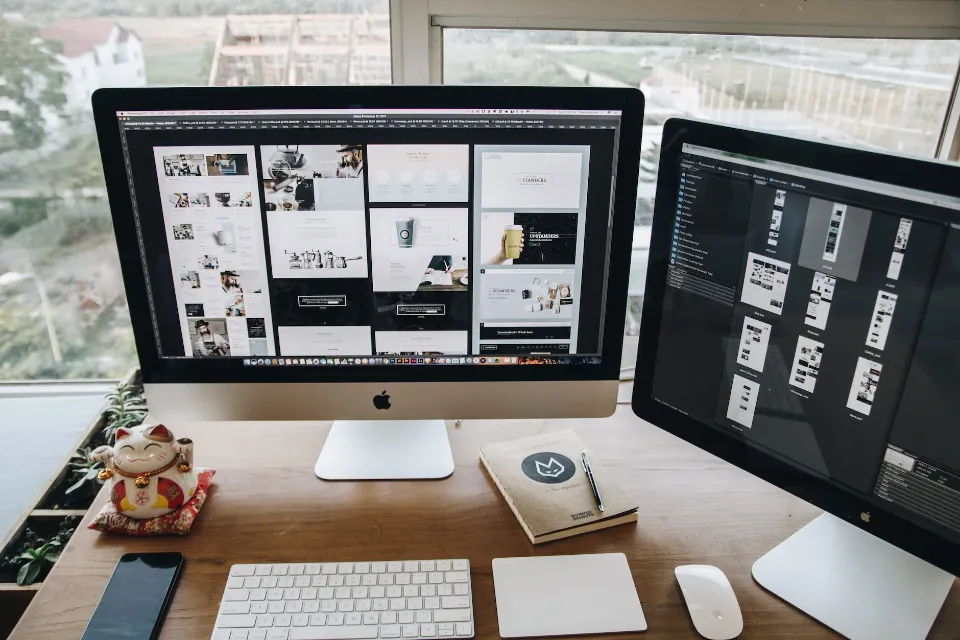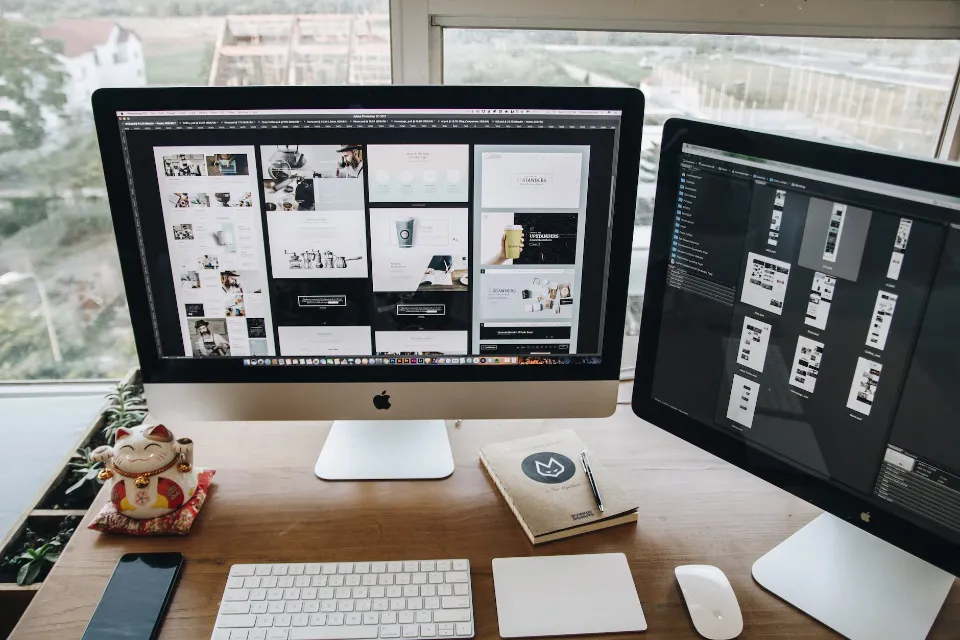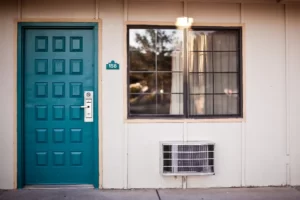
How to Lock Photos on Macbook: Useful Methods
If you’re anything like us, you’ve moved photos from your iPhone to a Mac to free up space on your device. There may be a few of these photos that you don’t want other people to see. You might want to lock these photos on your Mac to protect them from prying eyes and keep them private. In this post, we’ll help you lock your photos on a Mac so only you can view them when you want to.

How to Lock Photos on a Mac: Step-by-step Guide
Method #1: Using the Photos App
If you store your photos inside of the Photos app, you can use it to lock them. You’ll need to transfer your photos to the Photos app if they are currently stored somewhere else in order to lock them.
Step #1: Add pictures to the Photos app
If you have pictures saved on your Mac’s storage, you can add them to the Photos app. For this, open the Finder app and locate the pictures you want to lock.
Once you find these pictures, press and hold the Command(⌘) key and click on the pictures you want to select.
When you’ve selected, right-click or Control-click on any one of the selected files and go to Share > Add to Photos from within the menu that appears.
Now, the Photos app will receive the chosen images.
Step #2: Hide pictures on Photos
To lock pictures, open the Photos app on your Spotlight, Launchpad, or the Finder on a Mac.
Inside Photos, click the Library tab on the left sidebar.
All of your uploaded photos to the Photos app are now visible to you. To select the pictures you want to lock, press and hold the Command(⌘) key on your keyboard and click on the picture you want to select.
Once selected, right-click or Control-click on any selected picture and select Hide <n> Photos where n is the number of photos you selected.
To confirm your action, click on Hide in the prompt that appears.
The photos you chose will now be secured in the Photos app’s Hidden folder. When someone opens the Photos app, these pictures won’t be visible because they’ll be hidden.
Method #2: Using the Disk Utility App
If the folders on your Mac are scattered with a lot of pictures. then you can use the Using the Disk Utility app, password-protect them. Before you do that, you can compile all the pictures you want to lock in a separate folder on your Mac.
Step #1: Create a Folder With Pictures You Want to Lock
Open the Finder app and go to the location where you want to put the Locked folder to get started.
Inside this location, click on the File tab from the Menu Bar at the top and select New Folder.
When the new folder is created, type its name and then hit the Return key on your keyboard to finish.
Before locking them, transfer the images from your Mac to the newly created folder.
For that, you can use these keyboard shortcuts to get it done:
- To select multiple files: press and hold Command(⌘) and click on the files you want to select.
- Using the keyboard shortcut Command + X, you can quickly cut a selection of files.
- Use the shortcut on the keyboard Command + V to paste a selection of files.
After moving all the images you wish to conceal, proceed to step two to lock them.
Step #2: Lock This Folder Using Disk Utility
Use Finder, Launchpad, or Spotlight to launch the Disk Utility app and lock the folder with a password.
Open the Disk Utility app, select File from the top-level Menu Bar, then select New > Disk Image from Folder.
Navigate to the folder you created in step #1, select it, and click on Choose in the Finder window that pops up on the screen.
You’ll now see a “New Image from Folder” menu on the screen. Click on the Encryption drop-down box to lock the chosen folder.
Select 128-bit AES encryption from the menu that appears (recommended).
In order to lock your chosen folder, you will now see a prompt asking you to create a password. Enter your preferred password into the Password and Verify boxes with care, then click Choose.
You’ll now get back to the New Image from Folder menu. You can change the name, location, and tags of the locked image here. Click Save in the bottom right corner when finished.
Currently, the locked folder’s disk image is being created by the Disk Utility app.
When it’s ready, you’ll see the following message. Click on Done to proceed.
The chosen folder will now be locked and saved as a DMG file in your preferred location. The original folder can be deleted from your Mac after you’ve opened it to ensure that everything is there.
How to View Your Locked Photos
If you’ve locked your photos using one of the methods mentioned above, you can view them on your Mac by following the instructions below.
Case #1: If Locked Using Photos
When you locked pictures using the Photos app on a Mac, you can unlock them directly from the same app. For this, open the Photos app on your Mac.
With the Photos app open, click on the View tab on the Menu Bar at the top and select Show Hidden Photo Album.
The Photos app will now display a new tab. To open your locked photos, click on the Hidden tab on the left sidebar.
Here, you’ll see all the pictures you locked using Method #1 above.
To hide these pictures again, click on the View tab from the Menu Bar and select Hide Hidden Photo Album.
Case #2: If Locked Using Disk Utility
If you had used method #2 from above to lock pictures on your Mac, you can view them by opening the Finder app and navigating to the location where you created the locked image of the folder.
When you locate the disk image you created, double-click on it to access its contents.
The screen will now display a prompt asking you to enter a password. Type the password you added to the folder in method #2 and then click on OK.
The locked folder’s contents will now be displayed in a disk image folder in a new window. The pictures inside can be viewed, copied, and shared just like any other folder.
The drive icon for the disk image would be grey on your desktop.
When you’re done accessing your pictures, right-click or Control-click on this disk image and select Eject <folder name>.
If you leave the disk image injected, anyone who opens it may be able to access it without having to enter the required password. For this reason, it’s crucial that you eject the disk image when you’re done using the locked folder.
How to Disable Access to Photos for Other Apps on Mac
There are numerous reasons to lock your photos, but if you want to stop other Mac apps from accessing the photos in your Photos app, you must disable this access from the macOS settings. To do that, open the System Preferences app on your Spotlight, Launchpad, or the Dock to access Mac. You can also open it by clicking the Apple() icon from the Menu Bar and selecting System Preferences from the menu.
Inside System Preferences, click on Security & Privacy.
On the next screen, select the Privacy tab at the top.
Here, click on the Photos tab from the left pane.
You’ll now see a list of programs that can access the Photos app’s images and videos. The apps that have been check-marked are those that currently have permission to view your content inside Photos. Uncheck the box on the left side of the app you want to remove permissions from to prevent this access from being granted.
When this checkbox is unchecked, the selected app will not have access to any content from the Photos app.
You can repeat this process to prevent other apps from accessing your photos.

Conclusion
How to lock photos on Mac? It’s very easy to lock apps on Mac as long as you use the right tools. You can keep people from seeing your photos by locking access to Photos. It’s an effective method for preserving privacy. On an iMac, MacBook Pro, MacBook Air, etc., the same app and procedures can be used to protect any apps.
FAQs
Can I Lock Apps on Mac?
On your Mac, you can password-protect specific apps using AppLocker. It is simple to use and requires no configuration at all. Simply launch AppLocker, add a password, and choose the apps you want to keep private.
Can Other Mac Users See My Photos?
The system library is effectively open at all times by macOS in the background as long as that user is logged in, so even quitting Photos will not free up the library so that another user can open it.
How Do I Password Protect a Photo on a Mac?
Password Protecting through the Preview App
1. Any PDF or image file can be viewed in Preview. …
2. Rename your file if necessary in the save dialog box, then select Security options.
3. A password-setting option and an option to enable encryption will both be visible.
Can You Put Password on Photos?
There is another way to safeguard your privacy besides simply deleting the images or videos before handing over your phone. Instead, you can use a password to protect your embarrassing or personal photos or videos in just a few seconds, thanks to a new privacy feature.


